The Natural History of Peru Course
Photographs
The trip started for me by making the long drive from Miami University to Miami, Florida. I was with two other members of the course, Jeremy Moynihan and Tessa Edelen. After arriving in Miami, we boarded our Aeroperu flight, and four and a half hours later we arrived in Iquitos, Peru. After going through customs, we took a small wooden bus into downtown Iquitos. We then checked into the El Dorado hotel.
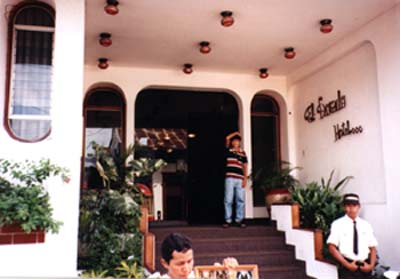
This would be the last of the electricity and toilets that we would see until the following saturday. Spending an evening in downtown Iquitos gave us a good example of the Peruvian nightlife. The next morning, we walked through the market, which is present in the streets of downtown Iquitos each morning.
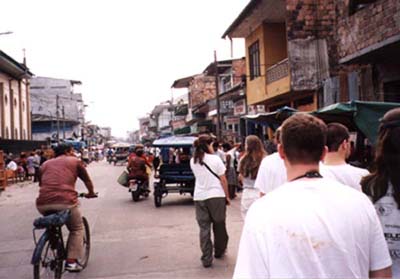
After leaving Iquitos, we spent the next six days in the rainforest.
Although we stayed in at a few different camps while in the rainforest, they were all a part of the Explorama Lodges tour, and they all looked very similar.
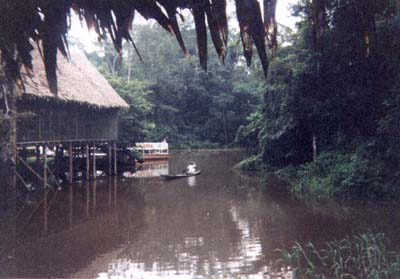
Our rooms were shared between two or three people, each bed complete with top-of-the-line mosquito netting. The rooms allowed for a constant breeze in the evenings, so the heat and humidity was never unbearable. Our showers were not heated, and our toilets were basically holes in the ground. However, the food was excellent, and the remoteness of our residence was a welcomed change from the Miami Beach life that most of the other Miami University students that I knew were experiencing.
During the week, we saw a variety of exotic plant and wildlife. Among the interesting animals that I encountered were Saddleback Tamarins, Pink Dolphins, Poison Dart Frogs, Sloths, Toucans, and a Tapir. In addition, we got extremely up-close with some Blue McCawls and a six foot long Emerald Tree Boa.
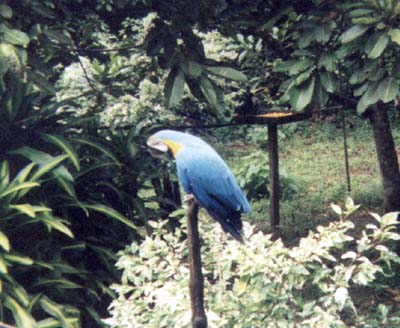
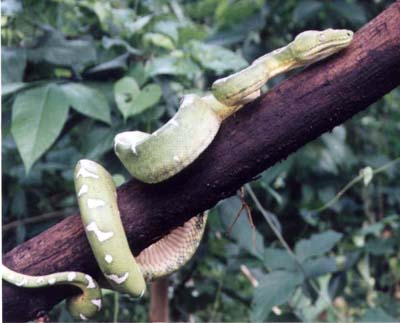
On one of our float trips, we had the opportunity to see Victorian water lilies. This photo really doesn't do justice to the size of the lily, as the floating leaf had a diameter of about three feet.
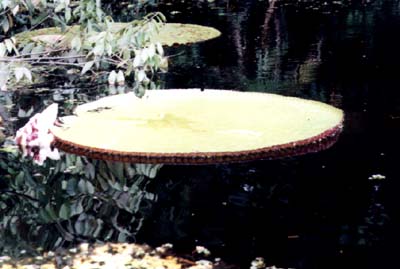
One aspect of the trip that quickly became a favorite of mine was the opportunity to see the way of life of the native Peruvians. We had the chance to meet a local Shaman, which was a truly amazing experience. Our guides were able to translate as the Shaman described his work and how different folk medicines were used. He then performed a folk remedy on me in which he used a brush of tobacco leaves, danced around me, sang, and tapped my head and shoulders with the brush. In their culture, this exhibition is supposed to remove the evil spririts from one's body. Dr. Eshbaugh later told me that he had seen the actual ritual performed at one time, and that it was identical to what the Shaman did to me, with the exception that the tobacco was actually smoked in the real ritual.
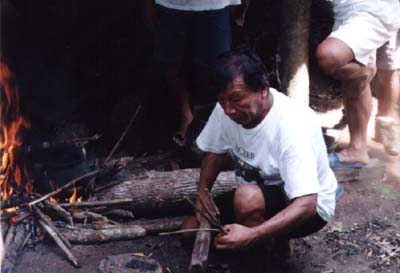
We were also able to go to one of the native villages and experience their market. At this gathering, several small "shops" were set up, and there was a large field in which the residents often played soccer. The chief of the village was also present.

Another exciting part of our trip was the opportunity to use the Canopy Walkway.
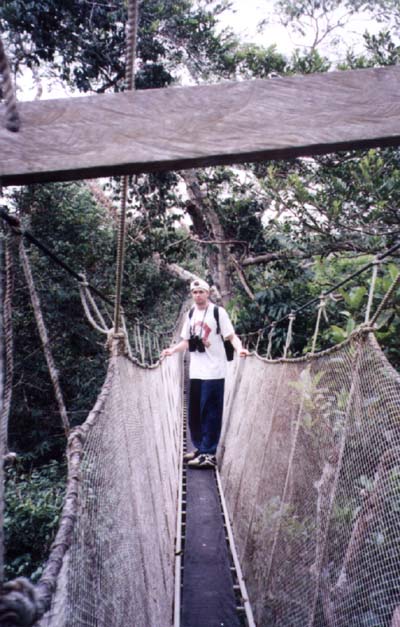
The narrow bridges of the walkway are supported by trees. While in the canopy, I couldn't help but think about how tree gaps often form in the rainforest. Bromeliads grow on the tree and begin to take it over, and then a gust of wind easily knocks down the tree, which takes additional trees down with it due to the system of vines and lianas. It was slightly frightening knowing that any one of those trees could go at any time, but our guides assured us that the walkway was safe.
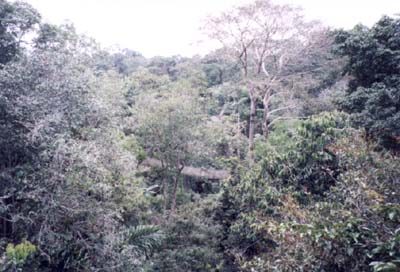
The walkway is up to 120 feet in the air at one point, and some of the distances are quite long.
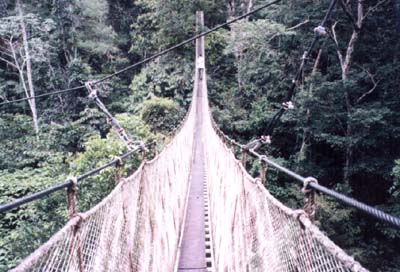
While exploring the canopy, we had the chance to see a different type of biology than we did while on the ground. At one point while I was in the canopy, I heard a bird very close to me. I looked up, and there was a toucan about 20 feet above me in a tree.
On another one of our float trips, we experienced "black water". Most of the water that we floated on was the typical brown color of the Amazon. However, some tributaries consist of "black water", which gets its name due to the intense black color that it has. I was amazed at how well this water reflected the trees bordering the channel. In fact, you'll probably have to look very closely to determine the line between trees and reflection in this photo.

Everyone in the class absolutely loved our week in the rainforest. We had an experience which educated us and broadened our minds, and I would not hesitate to spend another week or longer on the Amazon.
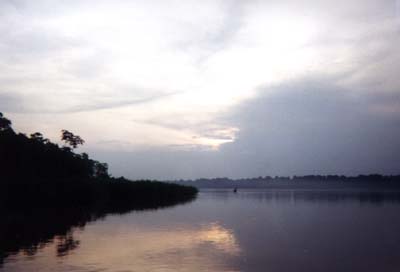
| Return to my Peru page | Class Participants | Dr. Lammers' Journal |